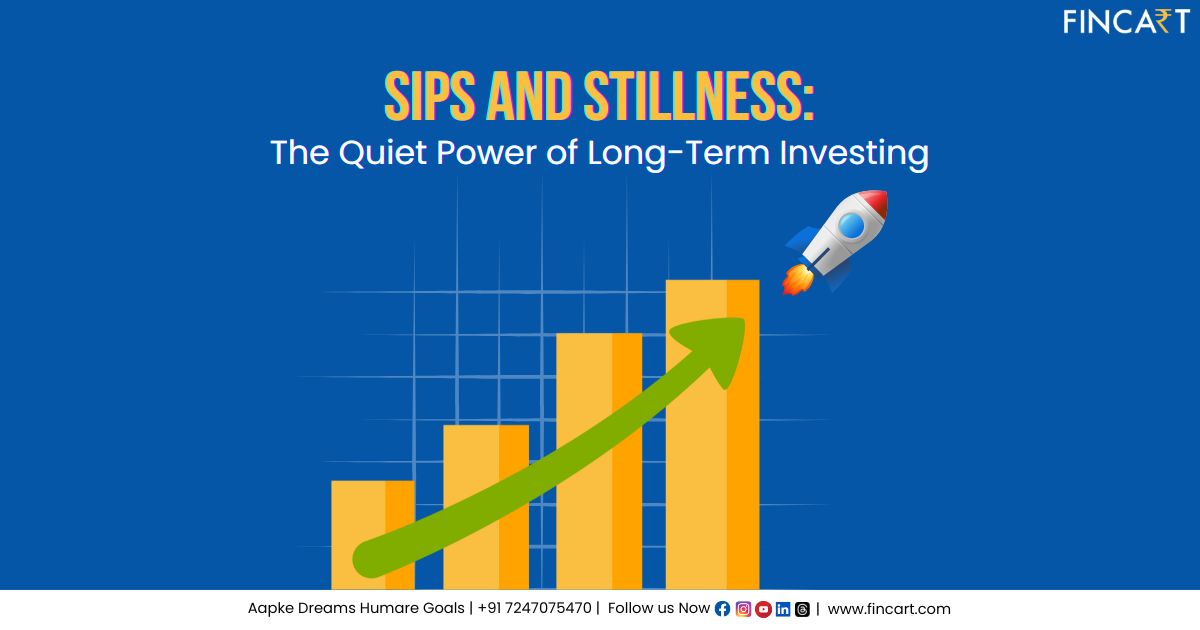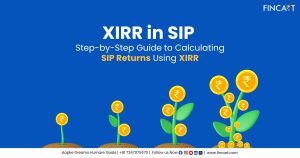Most people don’t lose money in the markets because of bad investments. They lose it because they couldn’t wait.
It starts innocently—a few months of average returns, a friend boasting about a better-performing fund, a headline predicting a crash. Suddenly, you’re switching SIPs, pausing investments, chasing trends. And just like that, your wealth-building journey takes a backseat.
But here’s the secret the market doesn’t shout about: stillness wins.
The investors who do the best aren’t the ones who move the fastest. They’re the ones who barely move at all. They pick good funds, set up their SIPs, and let time do what it does best—compound quietly. If you’ve ever wondered what separates consistent wealth creators from the rest, it often comes down to one thing: the discipline to stay invested for the long haul.
That’s the quiet strength of a long term SIP—and the edge most people overlook.
The Restless Investor: A Common Story
Let’s say you’re investing ₹10,000 every month into a diversified mutual fund through SIPs. You’ve been consistent for 18 months. But:
- Your portfolio hasn’t delivered the returns you were hoping for.
- You come across a blog about a tech fund that’s recently outperformed.
- You feel like you’re missing out and decide to switch.
- A few months later, another fund is in the spotlight—and you switch again.
At each step, you believe you’re making smart, informed decisions. But in truth, something else is happening.
You’re breaking the compounding cycle every time you switch.
This stop-start investing, driven by short-term returns and market noise, is quietly eroding the wealth you could have built. And it’s more common than you think.
Here’s what many investors get wrong:
- They treat SIPs like quick fixes, not long-term strategies.
- They judge performance over months instead of years.
- They confuse activity with progress.
But the market doesn’t reward the most active investor—it rewards the most patient one.
Wealth isn’t built by chasing trends. It’s built by staying put.
Time and consistency do the heavy lifting. Every time you interrupt that process, you’re resetting your growth. That’s why a long term SIP strategy isn’t just good advice—it’s the only way real wealth gets built.
Why the Market Rewards Patience
Markets go through cycles—ups and downs, booms and crashes. In the short term, returns can be erratic. But zoom out, and the story changes. Over a 10–15-year horizon, equity SIPs have consistently delivered strong returns, often beating most traditional investment instruments. This is the essence of the long term SIP advantage.
Let’s understand why this works:
- Rupee Cost Averaging: When markets dip, you buy more units for the same investment amount. When they rise, your earlier investments grow. This averaging effect compounds over time, smoothing out volatility.
- Compounding: The real engine of wealth creation. A small, consistent investment today grows exponentially when allowed to compound uninterrupted.
- Behavioural Benefit: SIPs automate discipline. When emotion is removed from the process, decisions are no longer swayed by headlines or fear.
But for this to work, you need one thing above all: the ability to stay still when your instinct tells you to act.
Impatience: The Silent Portfolio Killer
Let’s call out the real threat to your investment journey.
It’s not market crashes.
It’s not even choosing the wrong fund.
It’s impatience.
Impatience shows up quietly but costs you more than you realize. It creeps in when results feel slow, when markets fall, or when someone else seems to be earning more.
Here’s how it typically plays out:
- Switching funds too often – chasing last year’s winners instead of staying invested in quality funds.
- Pausing SIPs during market dips – reacting to short-term fear, which locks in temporary losses and disrupts compounding.
- Booking profits too early – walking away just when your investments are about to enter the real wealth-building phase.
These may seem like harmless moves—maybe even smart ones at the moment. But done repeatedly, they chip away at your returns.
What could have been a ₹1 crore corpus over 20 years?
Gets cut to ₹50–60 lakhs because of these small, frequent detours.
The Case for Long Term SIP: Real Numbers, Real Rewards
Let’s break it down with a simple example.
Suppose you invest ₹10,000 every month into a good-quality mutual fund through SIPs. The fund gives you an average return of 12% annually—which is quite reasonable for a long-term equity fund in India.
Now, here’s what happens over time:
| Investment Duration | Total Invested | Approx. Corpus at 12% Return |
| 5 years | ₹6 lakhs | ₹8.1 lakhs |
| 10 years | ₹12 lakhs | ₹23.2 lakhs |
| 15 years | ₹18 lakhs | ₹50.5 lakhs |
| 20 years | ₹24 lakhs | ₹98.4 lakhs |
Let’s break that down further:
- In 5 years, your ₹6 lakh investment grows to around ₹8.1 lakhs. That’s a decent start, but it’s just the beginning.
- By 10 years, your investment almost doubles to over ₹23 lakhs. You’ve now invested ₹12 lakhs and earned more than ₹11 lakhs in returns.
- At 15 years, the growth starts to feel real—₹50+ lakhs from a total investment of ₹18 lakhs.
- And in 20 years, ₹24 lakhs invested becomes close to ₹1 crore. That’s more than four times what you put in.
That’s not luck. That’s compounding—and time—at work.
Why does this happen?
Because in SIPs, the money you earn also starts earning. And when you stay invested for the long term, the effect multiplies. The last 5 years of a 20-year SIP usually create more wealth than the first 10 years combined.
This is why we always say:
The secret to growing wealth isn’t timing the market—it’s giving your investments time in the market.
But here’s the catch: this only works if you stay invested. If you stop your SIPs midway or keep switching funds every few months, you reset the clock—and break the compounding chain.
So if you’re wondering how people build wealth from ordinary incomes, this is how.
They commit to a simple plan. They stay consistent. And they let long term SIP investing do its quiet, powerful work in the background.
Stillness Doesn’t Mean Inactivity
Being patient with your investments doesn’t mean ignoring them. It simply means resisting the urge to act for the sake of acting. There’s a big difference between thoughtful discipline and emotional inactivity.
Smart investors build a system that works in the background—quietly but effectively. They don’t chase the market every day, but they don’t go on autopilot either. Here’s what that looks like:
- Link Your SIPs to Specific Goals
Whether it’s your child’s higher education, your retirement, or buying a home, tying investments to clear goals brings focus.
When you know what you’re investing for, it becomes easier to stay calm during short-term market dips. - Monitor, But Don’t Constantly Interfere
Keep an eye on how your funds are performing, but avoid tweaking them every time the market moves.
Changes should be driven by meaningful reasons—like a long-term underperformance, a fund manager change, or a shift in your risk profile—not by daily headlines. - Stay Clear, Stay Confident
The more you understand your portfolio—what you’re invested in, why you chose it, and how it’s aligned with your needs—the less likely you are to panic.
Confusion invites fear; clarity builds patience. - Think Beyond Just One Timeline
If you’re investing for multiple life goals—your retirement, a child’s wedding, a parent’s healthcare—you naturally develop a broader perspective.
Thinking across 5, 10, and 20-year horizons helps you move from reactive to strategic behaviour.
In short, stillness doesn’t mean doing nothing. It means doing the right things—and giving them time to work.
Stories from the Quiet Compounding Champions
Not all successful investors started with large sums of money. In fact, many of the most consistent wealth builders began modestly—with monthly SIPs of ₹5,000 or ₹7,500. What set them apart wasn’t how much they invested—it was how long they stayed invested.
They followed one simple rule:
Keep going. No matter what.
Through all kinds of market events, they stayed the course:
- Bull runs that tempted them to cash out early
- Market crashes that tested their patience
- Pandemics and global events that shook investor confidence
- Political and economic uncertainty that caused temporary volatility
While others paused SIPs, switched funds, or exited out of fear or excitement—these investors did something rare: they did nothing. They let time and compounding do the heavy lifting.
And what did they gain?
- Strong, steadily growing portfolios
- Clarity and confidence in their financial journey
- Most importantly, peace of mind
They weren’t chasing the next best thing. They were building something bigger—financial freedom. Their story is a reminder that you don’t need to be perfect. You just need to be consistent.
Why Staying Invested Feels Hard (But Isn’t)
We look for instant results — one-click checkouts, 10-minute deliveries, and next-day success stories. Naturally, our minds get wired to expect speed.
Investing doesn’t work like that. It’s slow. It’s quiet. It’s often boring. And that’s exactly why it works.
So how do you stay patient in a system that rewards those who wait?
Here are three habits that help build your ‘patience muscle’:
- Turn off the noise:
Resist the urge to check your portfolio every day. Markets rise and fall — let them. Daily movement doesn’t define long-term value. - Trust your plan:
If your financial plan was thoughtfully made, it doesn’t need constant fixing. Stick with it unless your goals or income change significantly. - Celebrate milestones, not market moves:
Your SIP turning 3 years old is a real achievement. Focus on progress, not headlines. That’s where wealth quietly grows.
During Market Crashes, Patience Pays the Most
It might sound counterintuitive, but some of the best mutual fund returns are born during market crashes — or just after. The key? You need to stay invested to benefit from the bounce-back.
When volatility strikes, investor behaviour typically falls into three categories:
- Most panic and exit.
Fear overrides strategy, and people pull out money at a loss. - Some stay put.
They ride out the storm, trusting the long-term fundamentals. - A rare few increase their SIPs.
They see falling prices as a buying opportunity — not a threat.
Guess who ends up building the most wealth?
Not the smartest or the luckiest, but the most patient.
Volatility isn’t a flaw in the system — it’s built into the journey.
The rewards aren’t just for those who endure it… but for those who understand it.
Final Thoughts: Let Time Do the Heavy Lifting
The most underrated financial skill isn’t stock picking. It’s not timing the market either.
It’s patience.
The quiet discipline to automate your SIP, define your goals, and then step back — letting months turn into years, and years into wealth.
You don’t need to outguess the market every quarter.
You need to be consistent.
- Stick to your plan.
- Ignore the noise.
- Let time and compounding do what they do best.
There’s quiet power in staying still.
Because real wealth isn’t built overnight — it’s built over time, through consistency, conviction, and the courage to wait when others rush.




